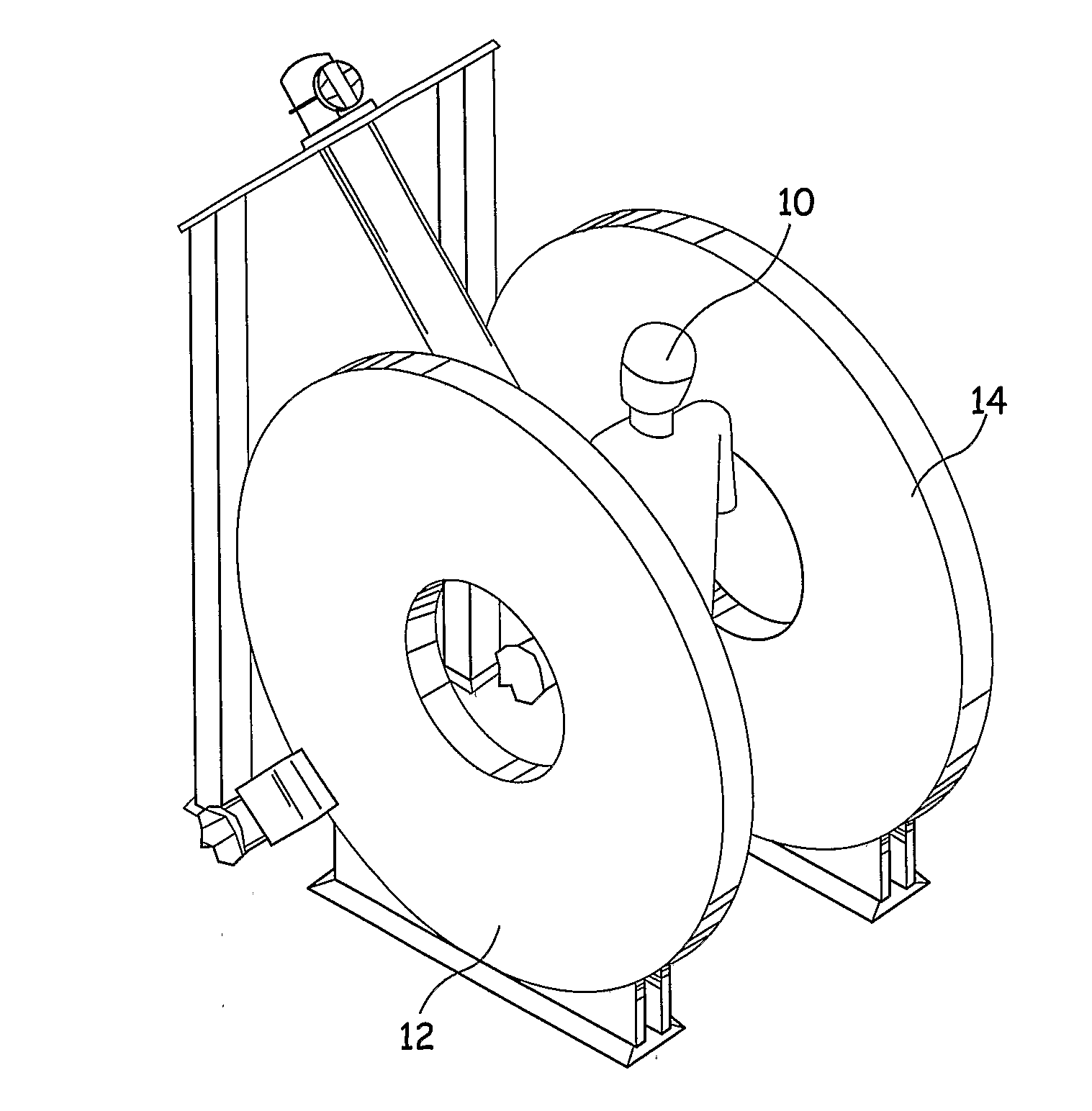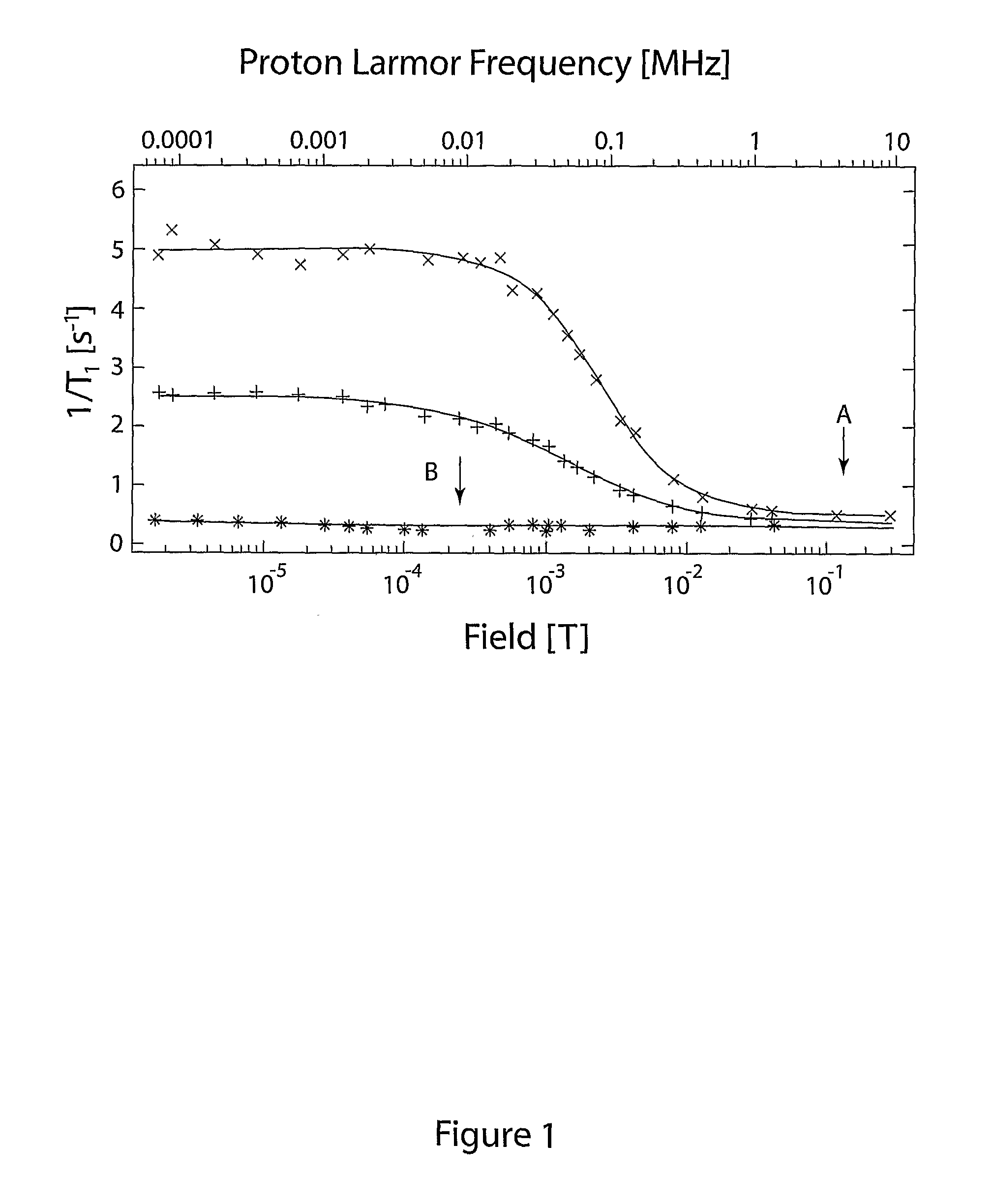Magnetic Resonance Imaging Apparatus and Method using Squid Detection and Field-Cycling
a magnetic resonance imaging and field-cycling technology, applied in the field of magnetic resonance imaging apparatus and methods, can solve the problems of claustrophobic and unnerving experience, field and operating frequency, and consequent loss of image quality, and achieve the effect of enhancing t1 contras
- Summary
- Abstract
- Description
- Claims
- Application Information
AI Technical Summary
Benefits of technology
Problems solved by technology
Method used
Image
Examples
Embodiment Construction
[0032]As an example of the preferred procedure, the DC background field is set to, say, 150 gauss and the 90° RF pulse is applied. The background field is then rapidly reduced to about 10 gauss or less and a period of 0.1-3 seconds is allowed to lapse before the 150 gauss field is re-applied and a 180° pulse is applied to generate a spin echo. In this procedure, during the low field period, the differences in T1 between different tissues, or parts of the sample, means that magnetisation will be lost or reduced in some parts of the sample so that the image is altered. Taking two images, one without the field being cycled and one with field cycling and comparing one image to the other will give an image highlighting the variations of T1. It is considered such images provide very good indications of abnormal human or animal tissues, particularly cancer bearing tissues.
[0033]One great advantage of SQUID based MRI is that the magnetic fields are modest, which means that the stored energy...
PUM
 Login to View More
Login to View More Abstract
Description
Claims
Application Information
 Login to View More
Login to View More - R&D
- Intellectual Property
- Life Sciences
- Materials
- Tech Scout
- Unparalleled Data Quality
- Higher Quality Content
- 60% Fewer Hallucinations
Browse by: Latest US Patents, China's latest patents, Technical Efficacy Thesaurus, Application Domain, Technology Topic, Popular Technical Reports.
© 2025 PatSnap. All rights reserved.Legal|Privacy policy|Modern Slavery Act Transparency Statement|Sitemap|About US| Contact US: help@patsnap.com



